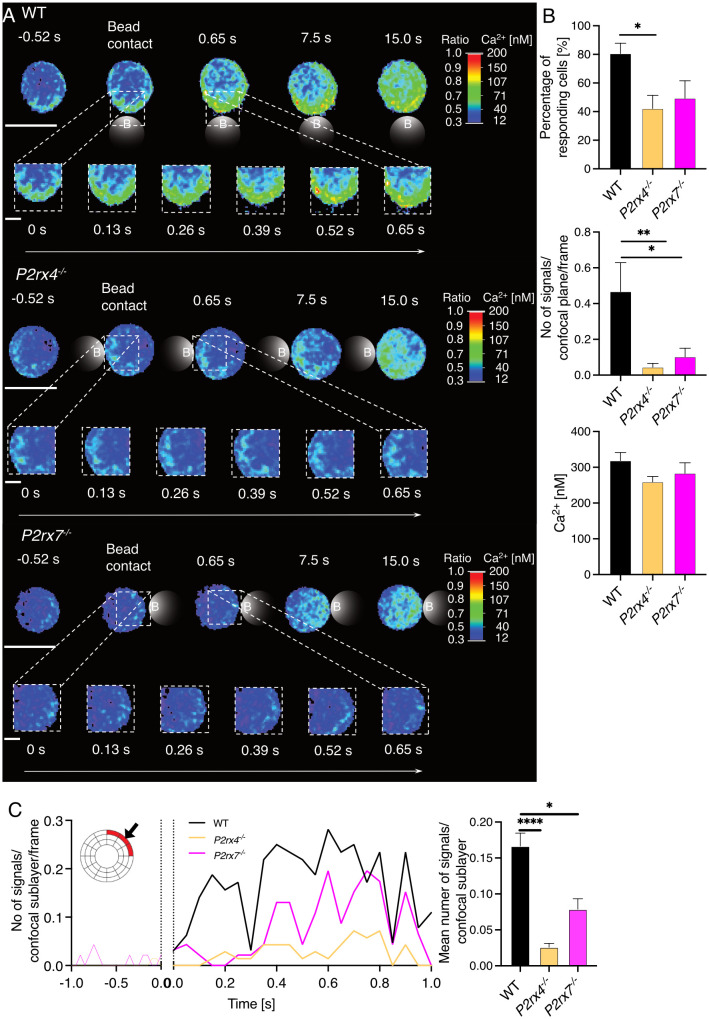Figure 1.
P2X4 and P2X7 influence the formation of Ca2+ microdomains in the first seconds after TCR stimulation. Initial Ca2+ microdomain imaging of CD8+ T cells of WT, P2rx4 -/- and P2rx7 -/- mice was performed with the Ca2+ indicators Fluo4 and FuraRed using anti-CD3/anti-CD28 coated beads. For each condition, 7 mice were used. (A) A representative cell of WT, P2rx4 -/- and P2rx7 -/- is shown for a time window of -0.52 s to 15 s after bead engagement (scalebar 5 µm) and a magnified region of the bead contact site from 0 s - 0.65 s (scalebar 1 μm). B-C) Data are mean ± SEM, WT n = 32 cells, P2rx4 -/- n = 35 cells, P2rx7 -/- n = 23 cells. N = 7 per group. Results were analyzed using the Kruskal-Wallis test and Dunnett’s multiple comparisons test (*p < 0.05; **p < 0.01, ****p < 0.0001). (B) Quantification of the initial Ca2+ microdomains in CD8+ T cells 15 s after bead engagement. The percentage of responding cells (upper panel), the number of Ca2+ microdomains per frame for whole cells (confocal plane, middle panel) and the average Ca2+ amplitude of these signals are shown (lower panel). (C) Analysis of the initial Ca2+ microdomains in a time window -1 s to 1s after bead engagement for contact site sublayer of a dartboard projection (as indicated in red, left panel) and quantification of these signals (right panel).

